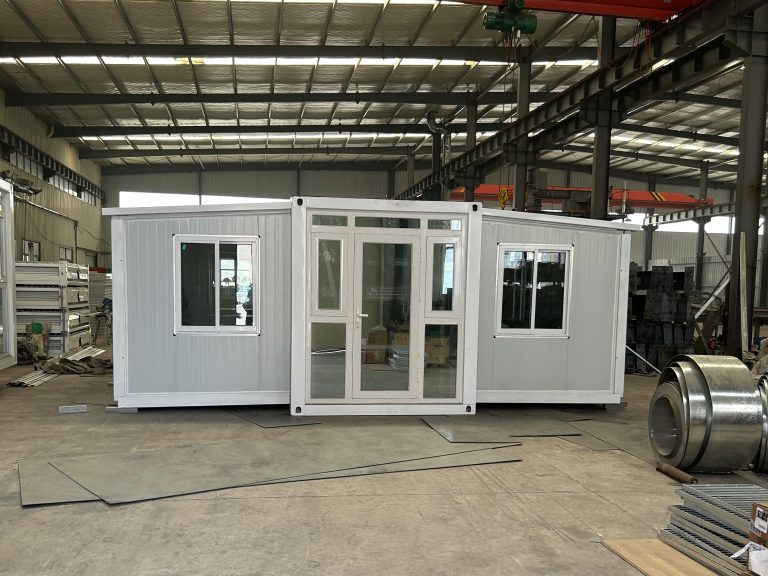Table of Contents
Importance of Thermal Bridge Effect in Steel Structure Buildings
Thermal bridging is a significant concern in steel structure buildings, as it can lead to energy loss, increased heating and cooling costs, and decreased comfort for occupants. The thermal bridge effect occurs when a material with high thermal conductivity, such as steel, creates a pathway for heat to flow through a building envelope, bypassing insulation and reducing its effectiveness.
Steel is a common material used in construction due to its strength and durability. However, its high thermal conductivity makes it a poor insulator, allowing heat to transfer easily through the building envelope. This can result in cold spots, condensation, and mold growth, as well as higher energy bills and a less comfortable indoor environment.
Preventing thermal bridging in steel structure buildings is essential to improve energy efficiency and occupant comfort. There are several strategies that can be employed to reduce the impact of thermal bridging, including the use of thermal breaks, insulation, and careful detailing of building components.
One effective way to prevent thermal bridging in steel structure buildings is to incorporate thermal breaks into the design. A thermal break is a material with low thermal conductivity that is placed between the steel structure and the building envelope to interrupt the flow of heat. This can significantly reduce heat transfer through the building envelope and improve overall energy efficiency.
Insulation is another key component in preventing thermal bridging in steel structure buildings. By properly insulating walls, floors, and roofs, heat transfer through the building envelope can be minimized, reducing energy loss and improving comfort for occupants. Insulation materials with high thermal resistance, such as foam board or spray foam, are particularly effective at reducing thermal bridging in steel structure buildings.
Careful detailing of building components is also crucial in preventing thermal bridging in steel structure buildings. By designing and constructing building components with thermal bridging in mind, such as using continuous insulation and minimizing the number of penetrations through the building envelope, heat transfer can be minimized and energy efficiency improved.
In conclusion, the thermal bridge effect in steel structure buildings can have a significant impact on energy efficiency and occupant comfort. By incorporating thermal breaks, insulation, and careful detailing into the design and construction of steel structure buildings, the impact of thermal bridging can be minimized, leading to lower energy bills, improved comfort, and a more sustainable built environment. It is essential for architects, engineers, and builders to be aware of the thermal bridge effect and take steps to prevent it in order to create more energy-efficient and comfortable buildings.
Effective Strategies for Preventing Thermal Bridges in Steel Structure Buildings
Thermal bridges are a common issue in steel structure buildings that can lead to energy loss and decreased thermal comfort. A thermal bridge occurs when a material with high thermal conductivity, such as steel, creates a pathway for heat to flow through a building envelope. This can result in heat loss during the winter and heat gain during the summer, leading to increased energy consumption for heating and cooling.
One of the main causes of thermal bridges in steel structure buildings is the use of steel columns and beams that penetrate the building envelope. These structural elements can conduct heat much more efficiently than the surrounding insulation, creating a pathway for heat to escape or enter the building. In addition, steel connections and fasteners can also act as thermal bridges, allowing heat to bypass the insulation and transfer through the building envelope.
To prevent thermal bridges in steel structure buildings, several effective strategies can be implemented. One of the most common methods is to use thermal breaks, which are insulating materials placed between the steel structure and the building envelope to interrupt the flow of heat. Thermal breaks can be made from materials such as foam, rubber, or fiberglass, and are designed to reduce heat transfer through the steel structure.

Another effective strategy for preventing thermal bridges in steel structure buildings is to carefully design the building envelope to minimize the number of steel penetrations. By strategically placing steel columns and beams away from the building envelope or using alternative structural materials, the risk of thermal bridging can be significantly reduced. Additionally, using continuous insulation around the building envelope can help to create a thermal barrier and prevent heat transfer through the steel structure.
In addition to these strategies, proper detailing and installation of insulation is crucial for preventing thermal bridges in steel structure buildings. Insulation should be installed continuously and tightly sealed to prevent air leakage, which can exacerbate thermal bridging issues. Proper insulation installation can help to maintain a consistent temperature within the building and reduce energy consumption for heating and cooling.
Regular maintenance and inspection of steel structure buildings is also important for preventing thermal bridges. Over time, steel connections and fasteners can degrade or become loose, increasing the risk of thermal bridging. By conducting regular inspections and repairs, building owners can ensure that their steel structure buildings remain energy-efficient and comfortable for occupants.
In conclusion, thermal bridges in steel structure buildings can lead to energy loss and decreased thermal comfort. By implementing effective strategies such as using thermal breaks, designing the building envelope to minimize steel penetrations, and properly installing insulation, thermal bridging can be prevented. Regular maintenance and inspection of steel structure buildings are also important for ensuring long-term energy efficiency. By taking these steps, building owners can create a more comfortable and sustainable environment for occupants while reducing energy consumption and costs.






